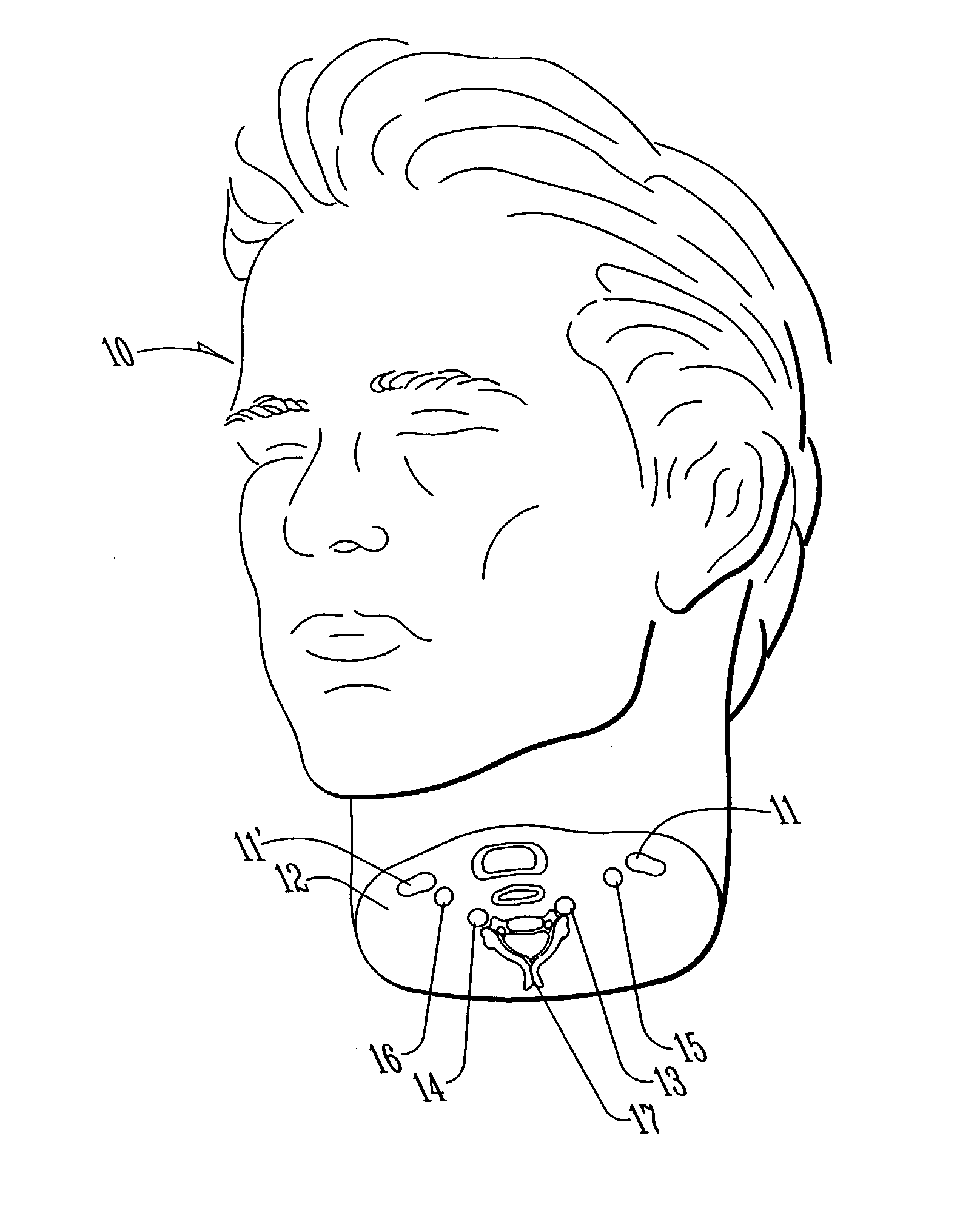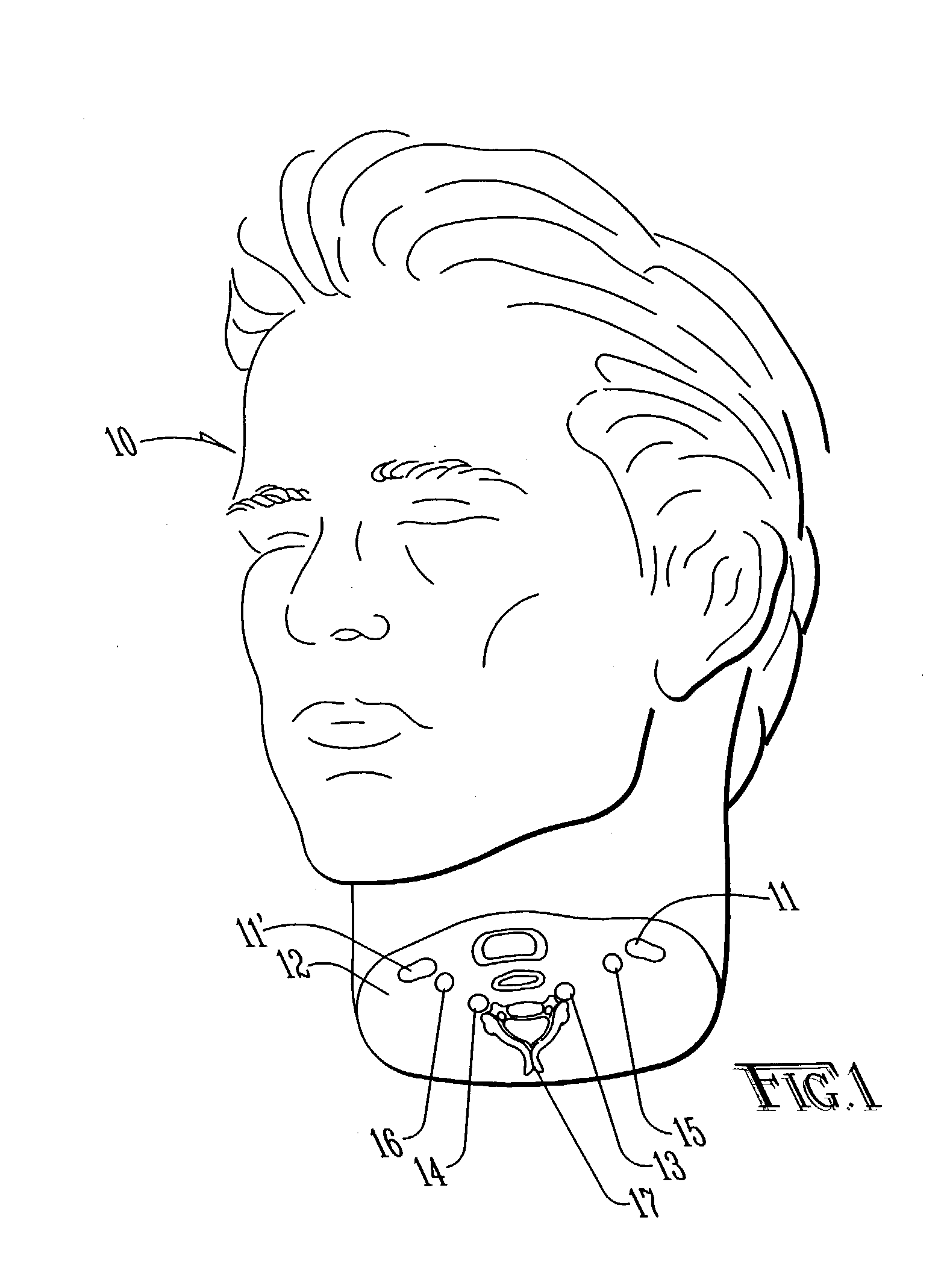Method and apparatus for surgical training
a surgical training and surgical technology, applied in the field of surgical training devices and methods, can solve the problems of limited training to artificial models, inability to reliably mimic the anatomy and the characteristics of the vascular tree and tissue in the human and animal anatomy during live surgery, and hemorrhage, so as to achieve the effect of replicating the experience of skin-to-skin procedures, and training is limited to a few procedures
- Summary
- Abstract
- Description
- Claims
- Application Information
AI Technical Summary
Problems solved by technology
Method used
Image
Examples
example 2
[0065] Preparation of Colored Fluid and Operating the System
[0066] We used tap water and food coloring to prepare red and dark red fluid. The containers of colored fluid were soft and flexible (serum bags worked well). The arteries were injected with red fluid through the carotid and vertebral arteries on one side until flow appeared on the other side. At this point, we closed the opposite carotid and vertebral arteries and continued injecting both ipsilateral arteries simultaneously, applying moderate pressure to open and fill the terminal branches, then closing the ends. The same was done with the jugular veins.
[0067] The pressure bag of the red reservoir was then connected to the pulsating device that provides a pulsating pressure that could be transmitted into the red fluid reservoir through the pressure bag. A rate of 60 pulses per minute was selected. The machine provided a rate of 60 to 120 pulses per minute. Pressure of up to 150 mm Hg could be applied through the pressure b...
example 3
[0070] Craniotomy
[0071] A large scalp flap was made to allow a variety of approaches. The superficial temporal artery (STA) was preserved for practice of the STA-MCA bypass. Any bleeding vessels were ligated, coagulated, or clamped by Raney clips. According to the intended procedure, a variety of craniotomies were performed, with care to preserve the underlying dura. The edges of the bone were waxed to prevent a fluid leak. The dura was opened and leaking vessels were coagulated.
example 4
[0072] Cisternal and Vascular Dissection
[0073] The exposed brain was lifelike, with pulsation and fluid filled cisterns, the arteries were red and pulsating, the veins were darker and filled, and a clear fluid simulated the release of cerebrospinal fluid when the arachnoid was opened. The sylvian fissure was split, the branches of the MCA was followed down to the carotid and basal cisterns, dissecting the branches of the circle of Willis, and exposing all the neurovascular structures in the skull base.
PUM
 Login to View More
Login to View More Abstract
Description
Claims
Application Information
 Login to View More
Login to View More - R&D
- Intellectual Property
- Life Sciences
- Materials
- Tech Scout
- Unparalleled Data Quality
- Higher Quality Content
- 60% Fewer Hallucinations
Browse by: Latest US Patents, China's latest patents, Technical Efficacy Thesaurus, Application Domain, Technology Topic, Popular Technical Reports.
© 2025 PatSnap. All rights reserved.Legal|Privacy policy|Modern Slavery Act Transparency Statement|Sitemap|About US| Contact US: help@patsnap.com



